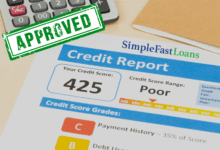Student Loan Refinance: A Comprehensive Guide
Student loan refinance offers a potential pathway to lower monthly payments and reduce the overall cost of your student loans. This process involves replacing your existing federal or private student loans with a new loan from a private lender, often at a more favorable interest rate. However, it’s crucial to understand the intricacies before making a decision, as refinancing also carries potential drawbacks. This guide will navigate you through the essential aspects of student loan refinancing, empowering you to make an informed choice.
We will explore the eligibility criteria, compare various lenders and their offerings, delve into different repayment strategies, and highlight the potential risks involved. Understanding these factors will enable you to determine if refinancing aligns with your financial goals and circumstances. We’ll also provide practical examples and tools to assist you in your decision-making process.
Understanding Student Loan Refinancing
Student loan refinancing is a process where you replace your existing student loans with a new loan from a different lender, often at a lower interest rate. This can potentially save you money on interest payments over the life of your loan. Understanding the process, benefits, and drawbacks is crucial before making a decision.
The Student Loan Refinancing Process
Refinancing involves applying to a lender, providing documentation (like your credit score, income, and existing loan details), and undergoing a credit check. The lender will then assess your application and offer a new loan with terms (interest rate, loan term, repayment plan) based on your creditworthiness. If you accept the offer, your old loans are paid off with the proceeds of the new loan, and you begin making payments to the new lender. The entire process typically takes several weeks, but the exact timeline varies depending on the lender and your individual circumstances.
Benefits and Drawbacks of Refinancing Student Loans
Refinancing offers several potential advantages. A lower interest rate is the most significant benefit, leading to reduced monthly payments and lower total interest paid over the life of the loan. Streamlining multiple loans into a single payment simplifies budgeting and repayment management. However, refinancing also carries risks. You might lose federal loan protections, such as income-driven repayment plans or loan forgiveness programs. Furthermore, a lower interest rate isn’t guaranteed; your approval and interest rate depend on your credit score and financial situation. If your credit score is poor, you may not qualify for a lower rate, or even be approved at all.
Refinancing Compared to Other Debt Consolidation Methods
Refinancing is a specific type of debt consolidation focused solely on student loans. Other methods, like personal loans or balance transfer credit cards, can consolidate various debts, including student loans, credit card debt, and medical bills. However, personal loans often come with higher interest rates than dedicated student loan refinancing options. Balance transfer credit cards offer 0% introductory APR periods, but these are temporary, and high interest rates kick in afterward. Refinancing usually offers a fixed interest rate for the life of the loan, providing more predictability.
Examples of Refinancing Scenarios and Outcomes
Scenario 1: A borrower with $50,000 in federal student loans at 6% interest refines to a private loan at 4% interest. This could significantly reduce their monthly payments and save thousands of dollars in interest over the loan’s lifetime.
Scenario 2: A borrower with excellent credit refines their loans and secures a much lower interest rate, resulting in substantial savings.
Scenario 3: A borrower with a poor credit score applies for refinancing but is rejected due to their credit history. They remain with their original, higher-interest loans.
Comparison of Interest Rates from Different Lenders
| Lender | Interest Rate Range (APR) | Loan Term Options | Additional Fees |
|---|---|---|---|
| Lender A | 3.5% – 7.5% | 5, 10, 15 years | Origination fee |
| Lender B | 4.0% – 8.0% | 10, 15 years | None |
| Lender C | 3.0% – 6.0% | 5, 7, 10 years | Late payment fee |
| Lender D | 4.5% – 9.0% | 10, 15, 20 years | Origination fee, prepayment penalty |
Eligibility and Qualification Criteria
Successfully refinancing your student loans hinges on meeting specific eligibility requirements set by lenders. These criteria help lenders assess the risk involved in lending you money and ensure you can comfortably manage your new loan payments. Understanding these criteria is crucial for a smooth and successful refinancing process.
Credit Score Requirements and Impact on Approval
Your credit score is a cornerstone of the refinancing application process. Lenders use your credit score to gauge your creditworthiness – essentially, your history of repaying debts on time. A higher credit score generally translates to better loan terms, such as a lower interest rate. Most lenders require a minimum credit score, typically in the 660-700 range or higher, for approval. Scores below this threshold might result in denial or less favorable loan offers. A credit score significantly below 660 may indicate a higher risk to the lender, potentially leading to rejection or significantly higher interest rates to compensate for the increased risk. For example, an applicant with a 750 credit score is far more likely to secure a lower interest rate compared to an applicant with a 670 score.
Income and Debt-to-Income Ratio in the Approval Process
Lenders also carefully consider your income and debt-to-income (DTI) ratio. Your income demonstrates your ability to make monthly payments, while your DTI ratio shows the proportion of your monthly income already allocated to debt repayments. A lower DTI ratio (generally below 43%) is more favorable, suggesting you have sufficient disposable income to manage additional debt. A high DTI ratio might signal financial strain, making lenders hesitant to approve your application or potentially offering less favorable terms. For instance, an applicant earning $60,000 annually with $1,500 in monthly debt payments has a DTI of 30%, which is generally considered acceptable. However, an applicant with the same income but $2,500 in monthly debt payments has a DTI of 50%, which might raise concerns for lenders.
Situations Resulting in Ineligibility for Refinancing
Several scenarios can lead to ineligibility for student loan refinancing. These include having a very low credit score (significantly below 660), a high debt-to-income ratio (exceeding 43%), a history of late payments or defaults on existing loans, or insufficient income to support the new loan payments. Applicants with significant outstanding tax liens or bankruptcies may also face difficulties securing refinancing. Furthermore, some lenders may have specific restrictions on the types of student loans they refinance, such as excluding Perkins loans or Parent PLUS loans. For example, an applicant with a history of multiple loan defaults would likely be ineligible for refinancing due to the demonstrably high risk of default.
Eligibility Checklist for Applicants
Before applying for student loan refinancing, it’s beneficial to assess your eligibility. Use this checklist to determine your readiness:
- Check your credit score: Aim for a score above 660.
- Calculate your debt-to-income ratio: Strive for a ratio below 43%.
- Review your income: Ensure it’s sufficient to cover your current and potential future loan payments.
- Assess your loan history: Identify and address any late payments or defaults.
- Understand lender requirements: Research the specific eligibility criteria of different lenders.
Choosing the Right Refinance Lender
Selecting the ideal student loan refinance lender is crucial for securing favorable repayment terms and minimizing long-term costs. A thorough comparison of lenders is essential to ensure you’re making an informed decision that aligns with your financial goals.
Types of Student Loan Refinance Lenders
Several types of lenders offer student loan refinancing, each with its own strengths and weaknesses. These include banks, credit unions, and online lenders. Banks often offer a wide range of financial products, potentially providing convenience for customers already banking with them. Credit unions, being member-owned, may offer more personalized service and potentially lower rates due to their non-profit structure. Online lenders, on the other hand, often streamline the application process and may offer competitive rates due to lower overhead costs. However, it’s important to carefully evaluate the reputation and customer service capabilities of each lender type.
Comparison of Interest Rates, Fees, and Repayment Terms
Interest rates, fees, and repayment terms vary significantly across lenders. For example, a bank might offer a slightly higher interest rate but a more established reputation and broader range of customer support options. An online lender might offer a lower interest rate initially but charge higher origination fees. Credit unions may offer a middle ground, balancing competitive rates with personalized service. It’s crucial to compare the annual percentage rate (APR), which incorporates interest and fees, to get a true picture of the loan’s overall cost. Repayment terms also differ; some lenders offer shorter terms with higher monthly payments, while others provide longer terms with lower monthly payments. Understanding the implications of each option on your overall cost and financial flexibility is vital.
Lender Reputation and Customer Reviews
Assessing a lender’s reputation and reviewing customer experiences is vital in choosing a trustworthy refinancing partner. This can be achieved through independent review sites, such as Trustpilot or the Better Business Bureau, and by checking online forums and social media discussions.
| Lender Type | Typical Interest Rate Range (Example – Subject to change) | Typical Fees | Customer Review Summary (Example) |
|---|---|---|---|
| Bank | 6.0% – 8.0% | Origination fee (around 1%), late payment fees | Generally positive, highlighting established reputation and accessible customer service. Some complaints regarding lengthy application processes. |
| Credit Union | 5.5% – 7.5% | Lower origination fees or none, potential for lower late payment fees. | Mostly positive, emphasizing personalized service and potentially lower rates. Some mention limited branch access for certain members. |
| Online Lender | 5.0% – 7.0% | Origination fee (variable), potential for prepayment penalties. | Mixed reviews. Some praise competitive rates and streamlined application process, while others report difficulties with customer service responsiveness. |
Importance of Reading the Fine Print and Understanding Loan Terms
Before committing to a refinance loan, meticulously reviewing the loan agreement’s fine print is essential. This includes understanding the interest rate type (fixed or variable), the repayment schedule, any prepayment penalties, and the lender’s policies on late payments and deferments. Overlooking crucial details can lead to unexpected costs and financial difficulties. A thorough understanding of all loan terms ensures you’re making a well-informed decision that aligns with your financial situation.
Step-by-Step Guide to Selecting a Reputable Lender
Choosing a reputable lender involves a systematic approach.
- Check Credentials: Verify the lender’s licensing and registration with relevant authorities.
- Compare Rates and Fees: Obtain quotes from multiple lenders to compare APRs and fees.
- Read Reviews: Thoroughly review customer feedback from various sources.
- Examine Loan Terms: Carefully review the loan agreement to understand all terms and conditions.
- Ask Questions: Contact lenders directly to clarify any uncertainties.
- Compare Customer Service: Evaluate the lender’s responsiveness and helpfulness.
- Make Informed Decision: Choose the lender that best suits your needs and financial situation.
Repayment Options and Strategies
Refinancing your student loans can significantly impact your monthly payments and overall repayment costs. Understanding the available repayment options and developing a sound repayment strategy is crucial to successfully managing your debt. This section details various repayment structures and provides practical strategies to optimize your repayment journey.
Fixed vs. Variable Interest Rates
Choosing between a fixed and variable interest rate is a key decision in refinancing. A fixed interest rate remains constant throughout the loan term, providing predictable monthly payments. A variable interest rate fluctuates based on a benchmark index, like the prime rate, potentially leading to lower initial payments but exposing you to the risk of increased payments if interest rates rise. The best choice depends on your risk tolerance and predictions about future interest rate movements. For example, if you anticipate interest rates remaining low or even decreasing, a variable rate might initially offer savings. However, if rates increase, your monthly payments could rise substantially. Conversely, a fixed rate provides payment stability but may result in higher overall interest paid if rates fall.
Impact of Repayment Terms
The length of your repayment term (loan term) directly affects your monthly payment and total interest paid. A shorter loan term results in higher monthly payments but significantly reduces the total interest paid over the life of the loan. Conversely, a longer loan term lowers your monthly payments but increases the total interest you’ll pay. Consider your budget and financial goals when selecting a repayment term. For instance, a 10-year loan will have higher monthly payments but significantly less interest compared to a 20-year loan with lower monthly payments but considerably more interest paid over the life of the loan.
Calculating Monthly Payments and Total Interest Costs
Calculating monthly payments and total interest costs involves using an amortization schedule. While many online calculators are available, understanding the basic formula can be beneficial. The most common formula uses the following variables:
M = P [ i(1 + i)^n ] / [ (1 + i)^n – 1]
Where:
M = Monthly Payment
P = Principal Loan Amount
i = Monthly Interest Rate (Annual Interest Rate / 12)
n = Number of Payments (Loan Term in Years * 12)
Let’s illustrate with examples:
Scenario 1: $50,000 loan at 6% interest over 10 years.
Scenario 2: $50,000 loan at 6% interest over 20 years.
Using an online loan calculator or the formula above, you’ll find that Scenario 1 results in higher monthly payments but significantly less total interest paid compared to Scenario 2.
Strategies for Managing Student Loan Debt After Refinancing
Effective management of student loan debt after refinancing involves proactive strategies. These include:
- Budgeting and prioritizing loan payments: Create a detailed budget to ensure consistent loan payments.
- Exploring additional income streams: Consider part-time work or freelance opportunities to accelerate repayment.
- Making extra payments: Even small extra payments can significantly reduce the loan’s lifespan and total interest paid.
- Automating payments: Set up automatic payments to avoid missed payments and late fees.
Sample Amortization Schedule
The following table illustrates a simplified amortization schedule for the two scenarios mentioned above. Note that actual schedules may vary slightly due to rounding and other factors.
| Month | Scenario 1: 10-year loan (Payment ~$590) | Scenario 2: 20-year loan (Payment ~$360) | Interest Saved (Scenario 1 vs. Scenario 2) |
|---|---|---|---|
| 1 | $250 (Interest) $340 (Principal) | $250 (Interest) $110 (Principal) | $0 |
| 2 | $248 (Interest) $342 (Principal) | $248 (Interest) $112 (Principal) | $0 |
| … | … | … | … |
| 120 | $0 (Interest) $590 (Principal) | $110 (Interest) $250 (Principal) | ~ $20,000 (Estimate after 120 months) |
Potential Risks and Considerations
Refinancing your student loans can offer significant benefits, such as lower interest rates and a simplified repayment plan. However, it’s crucial to carefully weigh the potential risks before making a decision. Understanding these risks will help you make an informed choice that aligns with your financial situation and long-term goals.
Loss of Federal Student Loan Protections
Refinancing your federal student loans with a private lender means you’ll lose the crucial protections afforded by federal programs. These protections include income-driven repayment plans, deferment and forbearance options in times of financial hardship, and loan forgiveness programs (like Public Service Loan Forgiveness). Once refinanced, these safety nets disappear, leaving you solely reliant on the terms of your private loan agreement. For example, if you experience unexpected unemployment, you may lose the ability to temporarily suspend your payments, potentially leading to delinquency and damaging your credit score.
Consequences of Defaulting on a Refinanced Loan
Defaulting on a refinanced student loan carries severe consequences. Unlike federal loans, which have specific processes for default and rehabilitation, private lenders handle defaults according to their own policies. This can involve wage garnishment, bank account levies, and damage to your credit score, potentially impacting your ability to secure loans, rent an apartment, or even get a job in the future. The impact can be significantly more severe than defaulting on a federal loan, as there are fewer government-mandated protections in place.
Impact of Changing Interest Rates on Refinanced Loans
Refinanced loans typically come with fixed interest rates. While this offers predictability, it also means you won’t benefit from potential future interest rate decreases. Conversely, if interest rates rise significantly after you refinance, you’ll be locked into a potentially higher rate than you might have obtained later. For instance, if you refinance at a 6% interest rate and rates subsequently drop to 4%, you’ll remain at 6% for the life of your loan. Conversely, if rates rise to 8%, you’re still paying 6%.
Situations Where Refinancing Might Not Be the Best Option
Refinancing isn’t always the optimal strategy. It may not be beneficial if you qualify for federal income-driven repayment plans that significantly lower your monthly payments or if you anticipate needing forbearance or deferment options in the near future. Furthermore, if your credit score is low, you might receive a higher interest rate than anticipated, negating any potential savings. Similarly, if you have a mix of federal and private loans, refinancing might eliminate the benefits of your federal loans while increasing your overall interest rate. For example, if you have subsidized federal loans with low interest rates, refinancing could result in higher payments and the loss of valuable benefits.
Decision-Making Flowchart
The following flowchart illustrates a simplified decision-making process for student loan refinancing:
[Imagine a flowchart here. The flowchart would start with a decision box: “Considering refinancing student loans?”. A “Yes” branch would lead to a series of boxes assessing credit score, interest rates offered, and the presence of federal loan benefits. Based on the answers, the flowchart would guide the user to a final decision box: “Refinance” or “Do not refinance”. A “No” branch from the initial box would simply end the flowchart.]
Illustrative Examples
Understanding the impact of student loan refinancing requires examining various scenarios. The following examples illustrate how refinancing can either significantly benefit or potentially harm borrowers, depending on individual circumstances and market conditions. It’s crucial to carefully analyze your own situation before making a decision.
Refinancing Leading to Reduced Monthly Payments and Interest
Let’s imagine Sarah, a recent graduate with $50,000 in federal student loans at a 7% interest rate, resulting in a monthly payment of approximately $550 over a 10-year repayment period. She decides to refinance her loans with a private lender offering a 4% interest rate. By refinancing, she secures a new 10-year loan at the lower rate. Her new monthly payment drops to approximately $470, saving her $80 per month. Over the life of the loan, this translates to a total interest savings of approximately $8,000. This scenario highlights the potential for substantial savings through refinancing when favorable interest rates are available.
Refinancing Leading to a Higher Overall Cost
Consider John, who has $40,000 in federal student loans at a fixed 5% interest rate. He refinances his loans during a period of rising interest rates, securing a new loan at 7.5%. While his monthly payment might only increase slightly, perhaps from $430 to $450, the higher interest rate significantly impacts the total interest paid over the loan term. If both loans are for 10 years, John will end up paying significantly more in interest over the life of the loan with the higher rate, despite the small increase in his monthly payment. This illustrates the risk of refinancing when interest rates are unfavorable.
Scenario Where Refinancing is Not Recommended
Maria has a mix of federal and private student loans. She has some federal loans with income-driven repayment plans, which adjust her monthly payments based on her income. These plans offer crucial protections, such as loan forgiveness after a certain number of payments. Refinancing her federal loans into a private loan would eliminate these benefits. Additionally, her credit score is relatively low, resulting in a high interest rate on a refinanced loan. In Maria’s case, the potential risks and loss of federal loan benefits outweigh the potential advantages of a slightly lower monthly payment. Therefore, refinancing is not a suitable option for her current situation.
Last Word
Refinancing your student loans can be a powerful tool for managing your debt, but it’s not a one-size-fits-all solution. Careful consideration of your financial situation, including your credit score, income, and debt-to-income ratio, is paramount. By thoroughly researching lenders, understanding the terms and conditions, and weighing the potential benefits against the risks, you can make an informed decision that best serves your long-term financial well-being. Remember, seeking professional financial advice is always recommended before making such significant financial commitments.





